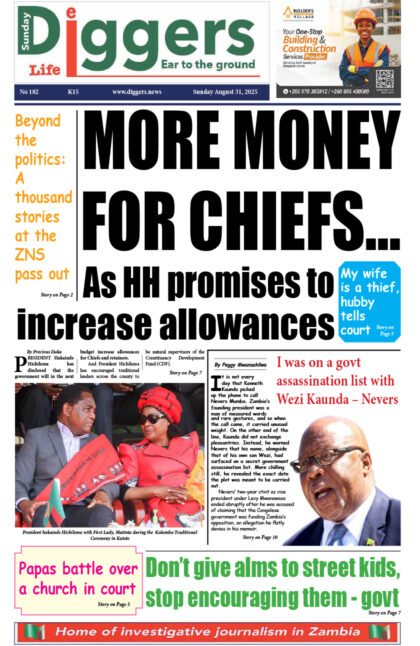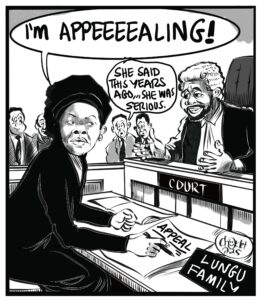Energy Regulation Board (ERB) economic regulation for electricity manager Rodgers Muyangwa says the Board always uses internationally accepted regulatory principles in electricity tariff determination, and only allows Zesco to increase tariffs if they meet key performance indicators.
And Kantanshi Independent member of parliament Anthony Mumba has questioned whether or not the ERB Board was taking interest to check the Zesco main operational costs to ensure that the benefits of a customer are passed on.
Muyangwa was speaking when he and his ERB team featured on Radio Phoenix’s Let the People Talk programme, Tuesday.
“This is not the first tariff review that the ERB is going to preside over. Since inception the ERB has basically presided over about 14 tariff adjustments. And these adjustments are just carried out on the basis of internationally accepted regulatory principles in electricity tariff determination. Just to share with you on the decisions that the ERB has made and to demonstrate that these public hearings are not mere academic exercise; if you make reference to the previous tariff decision of 2017, the application itself is made up of a number of other issues or proposals that the utility normally presents to the ERB with in order to make this application. But the bigger picture is always on the numbers. So out of the eight proposals that Zesco made to ERB, four of them were rejected outright rejection that the ERB was not going to allow those [and] one of them was [that] the utility had proposed to restrict the social tariff to a select group of customers but the ERB rejected it,” Muyangwa said.
“So that shows you that the ERB actually does carry out its own independent examination of the tariffs and based on facts, before the board makes independent decisions. There are 14 applications that we have presided over. So in 1998 just after the ERB came into being, Zesco applied for 30 per cent tariff adjustment and the ERB granted only 25 per cent, 1998 again Zesco applied for 46 per cent but they were granted 25, in April Zesco applied for 12 per cent and they were granted 12 per cent, in October 1999 the application was for 15 per cent and outright rejection, zero per cent was granted , in 2000, 25 per cent was applied for and 25 percent was given, in October 2000, 16 per cent was applied for and 16 percent was granted, in January 2003, 16 per cent was applied for and only 5.3 percent was given, in April 2005, 15 percent was applied for and 11 per cent was give and in December 2007 50 per cent was applied for and only 26 per cent was given. In July 2009, 66 per cent was applied for and 35 per cent was given. In 2010 36 per cent was applied for and only 25 per cent was given and recently in 2014, the utility applied for 26 per cent and only 16 per cent was granted and in May the utility had applied for 75 per cent tariff adjustment and this you might also remember that it was granted in two bunches. It was implemented into 50 per cent in May and 25 percent later but this was a very unique application because we were coming from a backdrop of power shortages,” Muyangwa explained.
He said the board approves Zesco electricity tariff adjustment proposals based on the utility’s key performance indicators.
“In our tariffs determination process, there is an agreement between the regulator and Zesco that the KPIs (Key Performance Indicators) will be used in awarding tariffs. You award them if they meet the KPIs as agreed and you penaliae them if they fail to meet the KPIs as agreed. There is a tariff award rule that we use in terms of granting adjustments if for instance Zesco meets 75 per cent of the KPIs on aggregate, then you give them a 100 per cent of the ERB tariff adjustments, if they meet between 50 and 75 per cent of the KPIs, you only give them 50 per cent, if they fail completely like if they scored below 25 percent we don’t deny them completely because we know that they have to operate, they need to provide a service so we give them 25 per cent. And if we see a deterioration of the performance or no improvement at all, the board summons Zesco to come and explain what the problem was so that we understand where they are having challenges because ultimately the poorer the performance indicators the poorer the services they provide,” Muyangwa explained.
And speaking when he called in during the programme, Mumba wondered whether or not the ERB board had taken interest to check if Zesco’s increased tariff benefits were trickling down to the consumers.
“When you are running a public business such as Zesco and you declare a dividend, it simply means that you have got so much excess profits which you don’t need to use in the business and therefore you give it to a shareholder who happens to be government on behalf of the people of Zambia. Now a few months later you come back and you want a tariff increment which obviously is going to be high enough to support the growth of your business. On the other hand, you have given out money to the shareholder who can easily wait for a range of returns later on given to the shareholder. Now the question is to ERB because obviously Zesco is a monopolistic business, has ERB taken an interest to go through the main operational cost of Zesco so that the benefit of the customer is passed on?” asked Mumba.
And in response, Muyangwa said Zesco had, in the 2018 pre-audited management report, posted a loss of K1.369 million and that the company did not declare any dividends in the 2017 financial management report.























